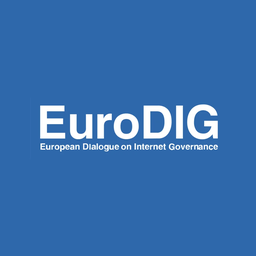RACI provides funding for academics to present their research at events such as the RIPE Meeting and RIPE NCC regional meetings. Due to the COVID-19 pandemic, funds for this initiative in 2021 will instead be used to support research projects relevant to work carried out by the RIPE NCC.
When budgeting for 2021, the RIPE NCC faced the same uncertainty as many other organisations: how long will the pandemic continue to affect our activities? Not knowing if our meetings would be in-person or fully online, we decided to set aside some money for our regular initiatives, such as RACI, which brings talented young academics to present their research at our events.
When it became clear the pandemic would carry on into 2021, and since academics don't need financial support to present at online events, the question arose what to do with the leftover money. Essentially, those funds had been set aside to support academia and increase ties between the research and RIPE communities. Staying true to this, we decided to direct the money towards academic projects relevant to the work carried out by the RIPE NCC. In particular, we looked for projects that made good use of the Internet measurement tools and data we make available to the public: RIS, RIPE Atlas and RIPEstat.
Planning
When it became clear RIPE 82 would be fully online, we went ahead with the above plan. We launched a call mid-April, open to universities and research institutions from across the RIPE NCC service region.
The fact that we needed to dispense the money by the end of the financial year made for some pretty tight deadlines. We wanted to pay half of the money as the projects commenced and the other half after an initial progress report, say after three to four months. Counting backwards, that meant that the universities needed to start work in August, especially since “starting work” might mean starting to recruit PostDocs and interns. Contracts should then be signed in July. Selection should be made in June. So the deadline for submissions was… in just over a month!
We reached out to all our academic networks, wrote an article outlining several research pitches and ideas, and in the end we received 22 applications from 14 countries - a big increase from the “5 to 10-ish” we'd hoped for! With help from our in-house researchers in the R&D team, we identified three candidate projects. After several interviews, we selected two of these, each of which will receive €24,000.
Ok, enough introduction. Here's what you're here for - the project plans.
AI4NetMon
The project is led by Pavlos Sermpezis and Athena Vakali from the Datalab and Web Science lab of the Aristotle University of Thessaloniki, Greece. We thought it was an ambitious, but extremely useful project. Its goal is to study and develop tools for improving the monitoring infrastructure by addressing two key questions:
- Where should new infrastructure be deployed?
- How to do you exclude bias from existing infrastructure in current measurements?
To answer these questions, AI4NetMon will follow a data-driven approach, exploiting Internet routing measurements and data provided by RIPE RIS, RIPE Atlas, RIPEstat, and other resources, such as the CAIDA’s databases, RouteViews, and PeeringDB. They will develop tools to aggregate and unify (heterogeneous) network data, and design ML/AI methods and tools to answer questions about potential locations for new monitor deployments, monitor/measurement selection strategies, and estimate bias.
The project is built around three main tasks:
- Task 1. Identify key use cases
Which are the best locations to deploy monitors? What is the best set of probes to conduct measurements from? There is not a single answer to these questions! The best measurement strategy depends on what you want to measure; e.g., a best set of monitors for detecting an outage may be different than the best set of monitors for estimating an anycast catchment. Since a global answer does not exist, the researchers need to provide answers per case. Hence, they will first identify the use cases of higher importance to network operators, and for which the RIPE infrastructure is more frequently used. An indicative list of use cases to start with are: hijack/route leak/outage detection or impact estimation, anycast monitoring, topology mapping or inference, inter-countries routing paths, etc.
- Task 2. Study current performance and improvement potential
The researchers will study the accuracy, coverage, and bias of the existing monitoring infrastructure, and quantify the margin for improvement by studying the best achievable performance, under any potential infrastructure. For example, if for a use case the current RIPE infrastructure’s estimations have a 20% mean error, but the best achievable error is 18%, then there is no significant margin for improvement; however, if the best achievable error is 5%, then they should try to improve the existing infrastructure towards this direction. To this end, they will use both experiments and BGP simulations.
- Task 3. AI methods for efficient monitoring
They will develop AI methods and tools to:- Identify the best locations (e.g., ASes, IXPs, geographical regions) to deploy new infrastructure
- Select set of vantage points from the existing infrastructure for lightweight and efficient measurements (e.g., subset of Atlas probes or route collectors1)
- Unbias estimations from existing measurements.
Read more about the project here.
Mapping Connectivity and the Digital Space in Central Asia
The project is carried out by Louis Pétiniaud under the supervision of Kevin Limonier, both working for GEODE, University of Paris 8, France and is supported by Loqman Salamatian at Columbia University. We were already familiar with their work on geopolitics of routing and thought that shedding light on a little-explored region like Central Asia would be quite beneficial.
So what is the project about? Internet and network mapping are not frequently combined with techniques and methods of cartography that are common in the fields of geography and of geopolitics. This research project makes that connection, exploring and developing methods aimed at better understanding interactions between the Internet and the topographical and geopolitical space - i.e. space and the political actors that rule over it.
The project takes as its focus the macro-region of Central Asia (focusing on Kazakhstan and Kyrgyzstan). The researchers intend to produce a comprehensive and diverse set of maps and visualisations - including infographics where relevant - that provide insights on the local Internet as situated in the geographical and geopolitical context of Central Asia. This will help answer such questions as:
- Does place matter for the shape of the Internet? In other words, to what extent does the geopolitical context influence the shape (data routing, data paths, latencies between endpoints etc.) of the Internet?
- Conversely, to what extent does the shape of the Internet influence the geopolitical situation of countries, or interactions between countries?
The region of Central Asia presents a variety of propitious conditions that will contribute to the reliability and accuracy of the analyses of this project:
- It is an almost enclaved network, with limited connections to the major networks of the Internet, and with few Internet infrastructures
- The structure of the network is undergoing changes, and may be bound to change at a faster rate in the coming months, given the technical and geopolitical investments of foreign actors in the region
- The geography of Central Asia involves a number of interesting physical characteristics such as a mountainous and enclaved environment and the existence of a number of different zones of contact with other interesting zones in terms of Internet architecture (South Caucasus, Middle East, South Asia, Russia, etc.). This variety makes it all the more relevant map the zones of contact at the level of routing and data paths
The primary objective of the project is to develop a cartography of the digital space at three levels: routing architecture, data paths, and latency, and to elaborate methods to apply them to topographical maps that will include geographic and geopolitical qualitative data. The researchers will use routing data from both RIPE Routing Information System (RIS) and other open source data, as well as AS information from a number of sources such as RIPEstat, CAIDA, PeeringDB, Looking Glasses. They will also use data paths and latency data from RIPE Atlas and, where required, CAIDA Arkipelago, as well as IP location services, including RIPE IPmap.
What's next?
With the admin settled, the projects are now under way. We expect them to be completed towards the end of summer 2022, so look out for presentations at next year's autumn RIPE Meeting. And of course, we'll be sharing detailed overviews of the outcomes of each project here on RIPE Labs when the time comes.
A question we've been asked a few times already is whether we plan to repeat this in the future. The answer is - we don't know yet. If the pandemic continues to push our events online, we might do the same with the 2022 budget. Once we go back to in-person events it would depend on the success of this experiment and whether the RIPE community thinks it is a good investment of time and money and wants us to continue doing it. With that in mind, do leave a comment below if you have any thoughts on the matter.





Comments 1
The comments section is closed for articles published more than a year ago. If you'd like to inform us of any issues, please contact us.
Pavlos Sermpezis •
Thanks @Gergana and @RACI! For those interested in the AI4NetMon project, more info can be found in the project website https://sermpezis.github.io/ai4netmon/ . Feel free to contact us for more info or collaboration